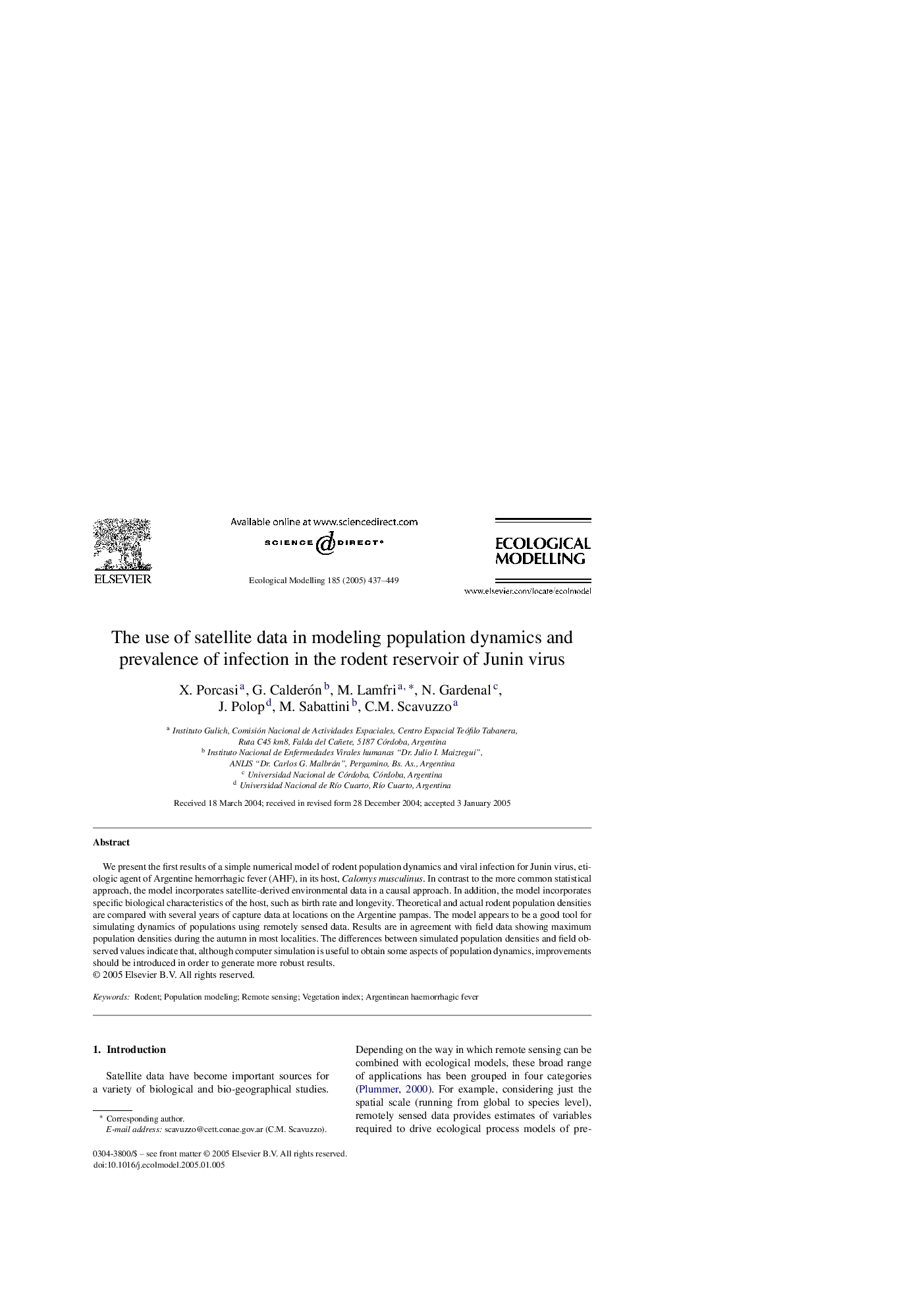| Article ID | Journal | Published Year | Pages | File Type |
|---|---|---|---|---|
| 9443398 | Ecological Modelling | 2005 | 13 Pages |
Abstract
We present the first results of a simple numerical model of rodent population dynamics and viral infection for Junin virus, etiologic agent of Argentine hemorrhagic fever (AHF), in its host, Calomys musculinus. In contrast to the more common statistical approach, the model incorporates satellite-derived environmental data in a causal approach. In addition, the model incorporates specific biological characteristics of the host, such as birth rate and longevity. Theoretical and actual rodent population densities are compared with several years of capture data at locations on the Argentine pampas. The model appears to be a good tool for simulating dynamics of populations using remotely sensed data. Results are in agreement with field data showing maximum population densities during the autumn in most localities. The differences between simulated population densities and field observed values indicate that, although computer simulation is useful to obtain some aspects of population dynamics, improvements should be introduced in order to generate more robust results.
Related Topics
Life Sciences
Agricultural and Biological Sciences
Ecology, Evolution, Behavior and Systematics
Authors
X. Porcasi, G. Calderón, M. Lamfri, N. Gardenal, J. Polop, M. Sabattini, C.M. Scavuzzo,
